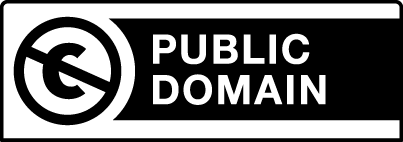
This FAQ is for informational purposes only. It was compiled by librarians and does not constitute legal advise.
Creative Commons Licenses enable content creators to determine exactly how others can use their works. The six licenses work within copyright law and enables creators to pick and choose which rights they want to grant to others and which they want to reserve for themselves. For example, a creator can allow users to copy and redistribute their work, but reserve the right to make adapt their work and profit from it.
The CC licenses only pertain to the rights conferred by copyright law. They cannot restrict uses that are otherwise permitted under copyright. For example, a CC license cannot limit or restrict use of a work for critique or parody as allowed under Fair Use.
To learn more about the Creative Commons, check out this podcast.
The Creative Commons works with lawyers from around the world to ensure the their licenses work within the laws a jurisdictions around the world. They are made up of three layers:
CC licenses last until the underlying copyright expires or a user violates their terms. If a user rectifies a violation within 30 of learning about it, the licenses will be reinstated.
Most CC license violations are worked out between the licensor and licensee. In the few time that a CC licenses has been part of a legal case, the enforceability of the license has not been questioned.
There are four basic elements that make up the CC licenses. The six licenses are made up of different combinations of these elements.
![]() Attribution: All CC licenses require proper attribution.
Attribution: All CC licenses require proper attribution.
![]() ShareAlike: This element requires that any remix or adaptation of a work must be licensed under the same or compatible license.
ShareAlike: This element requires that any remix or adaptation of a work must be licensed under the same or compatible license.
![]() NonCommercial: This element prohibits making money off a work. This element specifically refers to the primary intent of the use.
NonCommercial: This element prohibits making money off a work. This element specifically refers to the primary intent of the use.
![]() NoDerivatives: This element prohibits sharing adaptations of the work.
NoDerivatives: This element prohibits sharing adaptations of the work.
The six CC licenses are:

The Attribution license (aka CC-BY) allows for any use of a work, including profiting from it, as long as proper attribution is given. This is the most open of the licenses.

The Attribution-ShareAlike license (aka CC-BY-SA) allows for any use of a work, including adapting it and profiting from it, as long as proper attribution is given and the new work is licensed with a CC-BY-SA or compatible license.

The Attribution-NoDerivatives license (aka CC-BY-ND) allows for the work to be shared and used in any situation, including commercial, as long as proper attribution is given. It disallows sharing adaptations of the work.

The Attribution-NonCommercial license (aka CC-BY-NC) allows for any use of the work, as long as proper attribution is given and the primary intent of the use is not for profit. For this license, it is the use that is the determining factor, not the users. For example, a for-profit company can use CC-BY-NC works if the primary intent of their use is non commercial.

The Attribution-NonCommercial-ShareAlike license (aka CC-BY-NC-SA) allows for any use of the work, as long as proper attribution is given, the primary use is not commercially related, and the new work is licensed with a CC-BY-NC-SA or compatible license.

The Attribution-NonCommercial-NoDerivatives license (aka CC-BY-NC-ND) allows for sharing of a work as long as proper attribution is given. It does not allow for commercial uses of the work sharing adaptations.
The Creative Commons has created two copyright tool that related to the public domain.

The Public Domain Dedication tool (aka CC0) is used when a creator would like to dedicate their work to the public domain, thus removing all restrictions. Some countries don't allow creators to dedication works to the public domain, so CC0 has a "fall back" license that removes all restrictions. In the rare case that neither the CC0 tool nor the fall back are enforceable, it includes a promise by the licensor not to pursue copyright against those using the work in ways allowable in the public domain. CC0 has the same three-layer structure as the CC licenses.

The Public Domain Mark (aka PDM) can be used by anyone who has identified a work that is part of the public domain. PDM should only be for works that are in the public domain in all jurisdictions. The tool works like a tag or label and is intended to make woks in the public domain identifiable and discoverable to users; it does not confer any rights.
All CC licenses require proper attribution. Additionally, it is considered best practice to give attribution when using works in the public domain. The Creative Commons recommends using the "TASL approach":
New York City Skyline from DUMBO in Brooklyn
by Katie Haugland Bowen. CC BY 2.0
When you adapt another's work, you should indicate that your creation is a derivative and provide a TASL attribution to the original as well as the license you have chosen for you work.

Twilight Brooklyn by Cary Gouldin. CC BY 4.0.
This work is a derivative of New York City Skyline from
DUMBO in Brooklyn by Katie Haugland Bowen. CC BY 2.0
"Copyright Basics" Creative Commons Certificate for Educators, Academic Librarians and GLAM. https://certificates.creativecommons.org/cccertedu/chapter/1-what-is-creative-commons/. Accessed 6 Mar. 2022. Licensed under a Creative Commons Attribution License.
Creative Commons, https://creativecommons.org/. Accessed 6 Mar. 2022. Licensed under a Creative Commons Attribution 4.0 International License.
The CC buttons and icons were used in accordance in accordance with the policies if the Creative Commons.